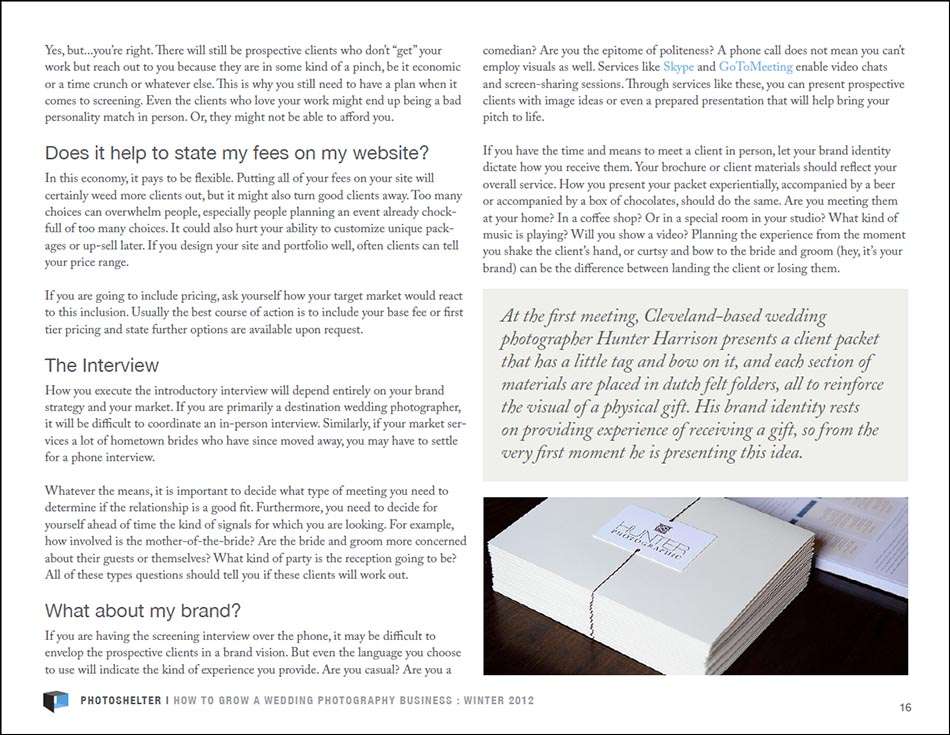I have some recommended reading for you. Don’t worry, this one is easy and short. If you are a wedding photographer, or considering becoming one, definitely check out the latest guide from PhotoShelter – How to Grow a Wedding Photography Business. This PDF guide features a lot of great content covering everything from marketing to client care. It also features input from top industry professionals including Ryan Brenizer, Brian Dorsey and your’s truly. You can get your free copy here.
In the guide, I discuss a few topics critical to starting a successful wedding photography business. Key point include correcting for the inevitable mistakes, creating a cohesive brand, and building your site for solid SEO performance (that’s Google, y’all). I highly recommend getting a copy for yourself. I plan to read it cover-to-cover tonight.

But wait, there’s more! When PhotoShelter interviewed me for the guide, we talked for a solid hour. The whole process has been a pleasure. However, there were a couple tips I forgot to include during the interview. To provide additional benefit, I though I would include the additional information right here.
Are you absolutely certain?
Photography can sound like a wonderful career. People have visions of running all over the world photographing amazing clients in beautiful locations. But that’s not how it works. In reality, photography is tough. It doesn’t pay well and you have to work very long hours. Of the hours you do work, very few are actually spent capturing photographs. The balance of the time is spent running a business, caring for your clients, editing photos, and really boring stuff like….taxes!
So ask yourself this – must I become a professional photographer to be happy? If you like your job well enough and enjoy time with your family, consider remaining a very serious amateur. There is nothing wrong with being the best damn amateur photographer ever. However, if you are chasing a vision in your head that you can’t get out, then maybe it is time to become a pro. One commonality among the professionals I know is an insatiable drive to capture a certain vision again and again. It’s not something they can let go.
It’s a vision thing
Being a master at business and client relations is important, but when it comes to any creative pursuit, you need a solid vision that defines your work. Developing this vision is like developing a muscle – it needs work each and every day. Here are some initial steps I took to hone my personal vision –
- Use a tool like Google reader to build a large collection of work that speaks to you. Google reader is a great tool for curating work from other photography blogs.
- Over time, decide which of the collected works really speak to you. Eliminate all those that don’t.
- Hone the remaining list down to those that share common visual themes. What you like creatively will begin to stick out.
- With your list of “visionaries” in mind, take the style you have curated and make it your own. Add your personal touch.
The above is not something that has an ending. It’s a muscle you must constantly exercise.
It’s always personal
The saying “it’s just business” makes my skin crawl. Who could think such a thing?! Business is, and should be, very personal. Build your photography or creative business around relationships. Serve your clients well and constantly surprise them. Show them you care about more than just their work. Demonstrate that you care for them as people. As I mention in the guide, a core component to my brand is that I want my clients to feel as though they were given a gift. This is a critical part of what I do for my clients – and it’s deeply personal for me and for them.
That’s all for today. Definitely checkout the guide. Also, stop back here often. I will be adding much more content for photographers very soon. Until then, you can keep up with our current work on Facebook.



